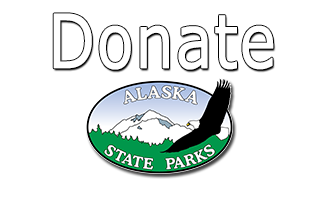Tips for a Safer Trip into the Parks
There's adventure and beauty in the wild country but also an element of risk. Snow avalanches, steep slopes, and water hazards have caused injuries and fatalities each year. You can increase your chances of a safe outdoor adventure by planning carefully, using common sense, and following these safety tips. When you are aware of the hazards of the outdoors and planning for delays and emergencies, your adventures can be more enjoyable. Have a safe trip!
Learn Outdoor Skills:
If you are new to the outdoors, take a class in outdoor skills or travel with an experienced person.
Plan for Delays:
Always bring enough extra food and fuel so that you can comfortably wait out any delays caused by weather or an emergency.

Know Your Limits:
Don't overdo it. Go only as far and as fast as the slowest person in your group can safely go.
File A Trip Plan:
Tell a friend where you are going, who you are going with, and when you expect to return. You can also file a trip plan with park rangers by visiting or calling any park office or ranger station.
Think Before You Drink:
Those sparkling mountain streams and late summer snowbanks may be contaminated by Giardia, an intestinal parasite that loves to make you miserable. Often called "beaver fever", this parasite can be carried by all mammals, including small voles who tunnel in snow.
Bring your drinking water with you, or purify it in the field. Giardia can be killed by boiling the water for two full minutes, or by disinfecting it with appropriate chemicals. Read the labels carefully and adjust dosage for cold or silty water. Some "pump filters" also remove Giardia. These must have a pore size of less than 5 micrometers. Others only filter out "some" of the Giardia.
Don't Be A Polluter:
Your fecal matter carries infectious agents. Bury it in a shallow hole (because of the cold temperatures, only the top 5-6 inches of soil has recycling activity) along with any ashes from your burned toilet paper, at least 100 feet from any water source. Remember, your pet's waste should be buried too. Soap can also contaminate so use it sparingly, if at all. Hot water and a handful of sand clean pots remarkably well.
Wildlife:
Moose cause more injuries in Alaska each year than bears. In summer, cows defend their calves by maintaining a territory around them. Don't get too close. If you do, cows will protect their calf by charging, stomping and kicking with very sharp hooves. If you are charged by a moose, RUN!
Porcupines injure many dogs and some people each year. While they can't "throw" their quills, they can flip their tails very quickly with a surprisingly long reach. Keep your pet on a leash and keep your distance.
Bees are found in Alaska too and numbers are high after a heavy snow winter. Anyone allergic to bees should carry medication whenever traveling in the backcountry.

Poisonous Plants:
Alaska has no poison ivy or oak, but it does have cow parsnip. The bruised leaves of this large perennial can leave a chemical on the skin that makes it very sensitive to the sun, causing a blistered burn in a short while. Not everyone is sensitive but those with other allergies should be cautious. The reaction is easy to prevent - wear long pants and long sleeves when hiking around cow parsnip, especially on sunny days.
A very poisonous berry is produced by Baneberry, an herbaceous shrub that grows in shady woods. The lacy leaf is distinctive, as is the berry. Though the berry may be red or white, it always has a groove from stem to stern on one side, similar to that of a peach. Be sure your children know how to identify and avoid this plant.
Vandals and Thieves:
They have damaged some cars in parking areas near trailheads. Remember to take all valuables with you. Never leave anything in sight. Because someone might be watching, lock items in the trunk before you get to the park or leave them at home. If you notice suspicious behavior, please notify someone immediately. A good description and license plate number can help us bring an end to a criminal career.

